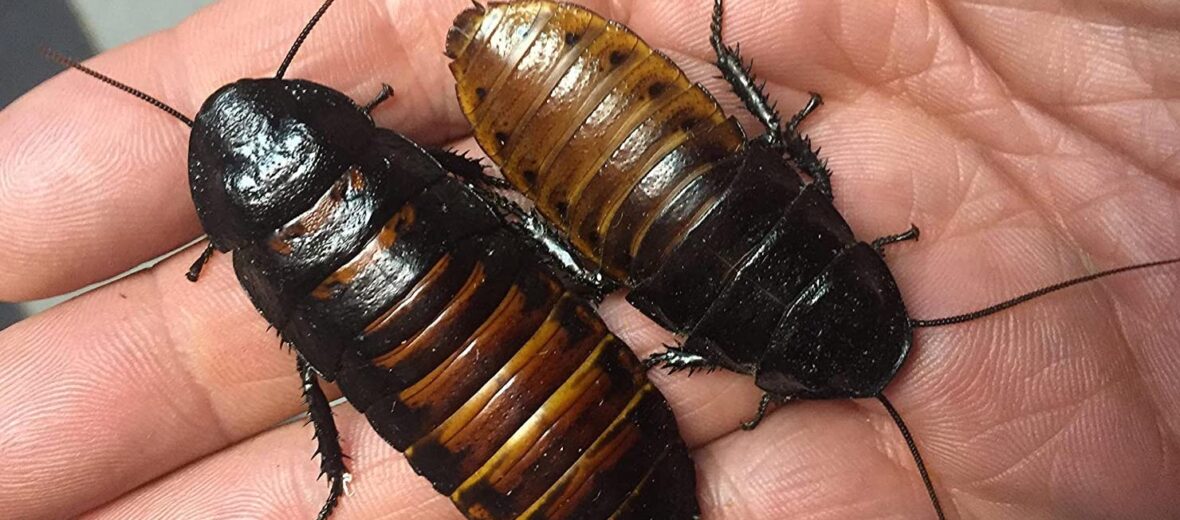
Ranking in at number 3 for the world’s largest known roach, it’s the Madagascar hissing cockroach. These beauties can be found in Madagascar, among the leaf litter and rotting logs of the rainforests and lowland forests. The heaviest roach, because I know you’re wondering, is the giant burrowing cockroach. The longest wingspan goes to Megaloblatta longipennis (up to 8 inches long)! There are approximately 20 known species of hissing cockroach.
First the Stats…
Scientific name: Gromphadorhina portentosa
Weight: Up to 7/8th ounce
Length: Up to 3.5+ inches
Lifespan: Up to 5+ years
Now on to the Facts!
1.) Males and females are differentiated by the prenatal humps on their head. Females lack these humps, also sometimes called horns.
2.) Even though cockroaches, as a whole, are considered scavengers, these are actually detritivores (eat decaying plant and animal matter).
3.) Madagascar hissing cockroaches eat rotting plants, fallen fruit, and decaying meat (like carrion).
4.) These cockroaches are often kept as pets. I know, I have some myself.
5.) When communicating, males will release a loud hissing sound. Small holes called spiracles on their backs that are typically used for breathing are also used to ward off predators. When they force air out of the specially modified spiracles quickly, it makes their telltale hissing sound. It is so loud that you can hear it across the room.
But wait, there’s more on the Madagascar hissing cockroach!
6.) Hissing cockroaches are nocturnal (active at night) and crepuscular (active at dawn and dusk).
7.) They may be big, but they can’t fly. Hissers don’t possess wings or even wing buds. They can climb any surface though, even smooth surfaces.
Did you know…?
99% of the world’s cockroaches are actually considered beneficial and not pests.
8.) Females are ovoviviparous and create an egg case called an ootheca to carry the eggs, as well as her neonatal nymphs, inside her body. Other insects have an external ootheca, like praying mantids.
9.) When ready, the female will bear up to 60 live young, called nymphs.
10.) It takes up to 2 months for the nymphs to be born. Once the female gives birth she is typically ready to breed again in a few days time.
Now a Short Madagascar Hissing Cockroach Video!
Also, check out the Critter Science YouTube channel. Videos added frequently!
Want to suggest a critter for me to write about? Let me know here.




Leave a Reply